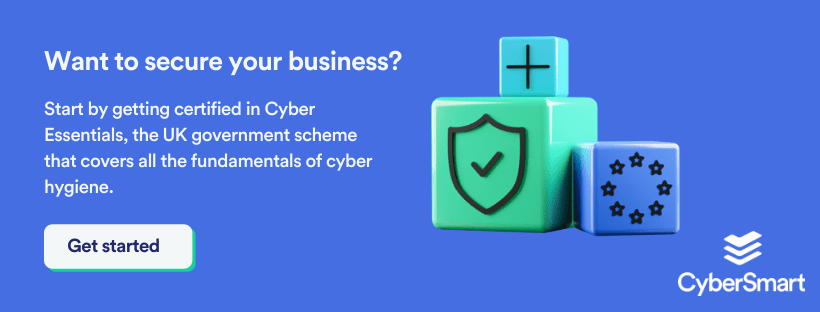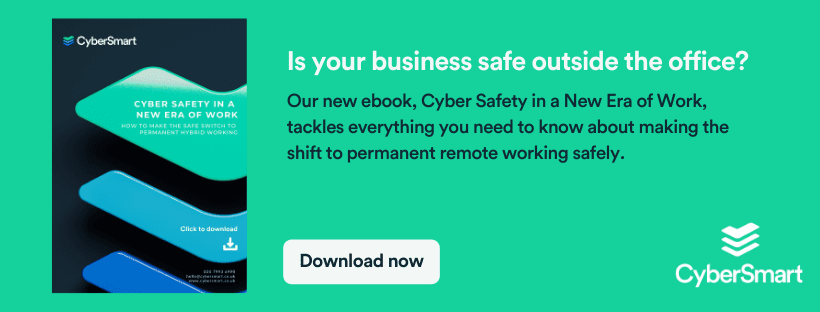You’ve probably heard the phrase BYOD before. ‘Bring Your Own Device” has been the darling of business and technology journalists for much of the last decade. And BYOD really is more than just hot air and hyperbole. For SMEs, it has the potential to change the way we approach procurement and resourcing forever.
However, what you’re less likely to have read about, is its connection with the Cyber Essentials certification. So, if you’re considering taking the plunge and adopting a BYOD policy, read our short guide first.
What is BYOD?
BYOD, or Bring Your Own Device, is simply giving employees the option to use their own devices for work. And this can mean everything from their own smartphones through to tablets and laptops.
Why do businesses adopt BYOD?
Like most business decisions, the benefits of switching to BYOD are largely cost-based. As any SME founder will tell you between grimaces, procuring hardware for all your staff can be eye-wateringly expensive. So having employees use their own is an immediate boost to a businesses’ bottom line. A Cisco report into BYOD found that businesses using it saved on average $350 per person, per year.
But it’s not all about the money. BYOD also offers employees greater choice over the tools they use for work. Anyone who’s ever used an Apple laptop at home and Windows machine at work (or vice versa) knows how annoying it can be to keep switching between operating systems. So why not let your people choose?
On top of this, BYOD can provide productivity benefits. The same Cisco study revealed that workers save an average of 81 minutes per week by using their own devices, or nine working days every year. And it can even improve employee wellbeing. In a study produced by Samsung, 78% said it helped them achieve a better work-life balance.
What does it have to do with Cyber Essentials?
So BYOD has many benefits and is becoming ever-more popular in the UK – 45% of UK businesses in 2018 had some form of BYOD plan. But what does this have to do with Cyber Essentials?
Well, it’s actually very simple. Any device being used for work purposes is likely to connect business networks and access company data. This poses security risks.
As we discussed in our recent ebook on remote working, employees using their own devices to access company networks and data can present a host of problems. Personal devices will often have inferior security tools to business ones. Employees are less likely to follow strict security protocols on their own devices. And, there’s plenty of evidence to suggest that we all engage in riskier behaviour when using our personal laptops and phones.
All of this can expose your business to unnecessary risks. But it doesn’t mean you need to scrap your plans for BYOD.
Does Cyber Essentials cover BYOD?
If a device is used to connect to the business network or access any business information, then it should be considered within the scope of Cyber Essentials. This includes doing some after-hours work on your home computer, accessing the company Google Drive, and even browsing work emails on your mobile.
If a device is used to connect to the business network or access any business information, then it should be considered within the scope of Cyber Essentials
It’s all too easy to fall into the trap of considering personal devices some separate entity, entirely disconnected from work. But that just isn’t the reality of many of our working lives. In our ‘always-on’ culture the personal and professional have a habit of bleeding into each other, particularly in an era when many of us are working remotely.
This means it’s vital you ensure that all devices used for work, whether personal or company-provided, follow the core tenets of Cyber Essentials. For example, ensuring security settings are switched on and up-to-date, anti-malware tools are installed, and apps are regularly updated.
What if you don’t have a formal BYOD policy?
Even if your business doesn’t have a formal BYOD policy, it’s still important you guard against the threat posed by personal devices. To illustrate, at CyberSmart we don’t have a formal BYOD policy, but we know many of our people use their phones to access emails and files.
So to ensure we’re not giving cybercriminals a backdoor into the business, we ask that every employee installs CyberSmart Active Protect on any device they might access work from. The CyberSmart app constantly checks any device that it’s installed on is compliant with Cyber Essentials and flags any problems to both us and the user. This means that however our staff choose to work, we can be sure they’re doing it safely.
BYOD has the potential to totally transform the way your business looks at procurement. But it also requires good cyber hygiene if it’s to be liberatory rather than a liability. So if you’re considering adopting BYOD, start by getting Cyber Essentials certified.











